Moorish Fort Pierce, Florida is a necessary post to further demonstrate the indigenous presence of the Moors in America, since the Moors are labeled as foreign invaders. May this post bring clarity. I thank you all for reading and I hope you all enjoy this blog post.




























Before we can label anything Moorish, we must look at the persons, places, and/or things that are associated with the Moors. Fort Pierce has peacocks, oranges, and Moorish architecture. All of these things are heavily associated with the Moors, so we can call these things Moorish.
Moorish Fort Pierce, Florida is famous for its peacocks and oranges. These Fort Pierce Peacocks are mostly located on Peacock Street at 700 Orange Avene, Fort Pierce, FL 34950: https://www.youtube.com/watch?v=uP1gGvfYJIs&list=LL&index=1.
Notice the location, 700 Orange Ave, since 7, and the orange are both sacred and symbolic of good (God). We know that 7 is a perfect number that is symbolic of creation. We also know that the orange is associated with the Moors since orange juice is Mor Juice. The Tangerine orange was named after Tangier, Morocco: https://rb.gy/0kq99.
We also know that oranges were the tree of life and were the golden apples of the Hesperides: https://www.youtube.com/watch?v=kakZGUtUbxc.
We also know that the huge landmass known as La Floridas was the Garden of the Hesperides: https://www.americaistheoldworld.com/gibraltar-of-the-west/.
Oranges and peacock flesh (phoenix meat) made the Moorish people very wealthy. It’s interesting that oranges and peacocks are both found in abundance in Fort pierce, which is a Moorish city as the Moorish architecture will prove later.
Here are some more images of the beautiful birds of paradise, aka, the peacocks in this post. Peacocks are a symbol of royalty, wealth, wisdom, renewal, and everlasting life. The Peacock is the phoenix bird and is the sacred bird of India and the sacred bird of the Sufi Moors of India: https://www.hurriyetdailynews.com/the-peacock-a-symbol-of-royalty-65241.
I know you all are wondering how did the sacred bird of India and the Moors end up in Fort Pierce? First, you must understand that North America is India Superior and Ethiopia Superior: https://www.americaistheoldworld.com/the-old-world-is-the-new-world/.
Now, that you know that North America is India Superior, the Peacocks of Fort Pierce should be of no surprise to you. Florida even had Elephants. Elephants are another animal that is sacred to India and to the Sufi Moors that ruled India: https://rb.gy/rfiem.
More evidence that the Sufi Moors ruled India: https://rb.gy/y1y7r.
The story of how these Peacocks came to Fort Pierce is ridiculous since these peacocks have always been indigenous to Fort Pierce, according to my uncle, who is 75 years old. My Uncle was born and raised in Fort Pierce, and he told me that these peacocks have always been in Fort Pierce. Below is the official story behind the Fort Pierce Peacocks:
“In the 1970s, Jack Crain opened a travel agency in an ornate enamel tiled building on Orange Avenue. He had a love for peacocks and purchased a few to roam the walled yard behind his business. Over the decades, the flock has grown and cascades into an area called Fort Pierce’s Peacock Arts District.” [End quote from: https://visitstlucie.com/the-story-behind-the-peacocks-of-fort-pierce/].
According to the official story, these peacocks were introduced to Fort Pierce by businessman Jack Crain in 1970. My Uncle was born in Fort Pierce in 1948 and he told me that these peacocks have always been here in Fort Pierce, so please avoid the hijack story of them try to explain away these old-world Moorish birds of paradise. They are trying to hide the fact that Fort Pierce is an Old-World Moorish City.
Fort Pierce is a coastal city that is still paradise since Fort Pierce has beaches, springs, peacocks, mango trees, coconut trees, moringa trees, and orange trees. All of which are symbolic of paradise.
The Fort Pierce Peacocks are mostly concentrated at 710 Orange Avenue on the historical property of Jack Crain, but they do venture out all over the city. The Jack Crain property was allegedly built in 1928 and is part of the Peacock Arts District in Fort Pierce. The property has a famous wall behind the Moorish palace that frequently has peacocks on the wall hanging out. The peacocks love this wall (see post image).
The Jack Crain property is clearly Moorish Architecture, but they call it Spanish revival Architecture, lol. Since when did the Spanish build Moorish Arches? The Spanish started building Moorish arches after the invasion of the Americas in the name of Christ in the early 1500’s. All the Spanish did was take credit for buildings that the Moors (Saracens) had already built in the Americas; therefore, Spanish Tile is Moorish Tile, and Spanish revival architecture is Moorish revival architecture.
The Fort Pierce peacocks also love to hangout across the street at a historical building called the First United Methodist Church of Fort Pierce. This building is also Moorish Architecture that they are calling Spanish revival architecture. In this post are images of this church and its interior. The interior has marble columns and stained-glass windows. This was the first church in Fort Pierce. I couldn’t find any information on when this building was built and who was the builder, which suggests that this building was already here and built by a previous advanced civilization of the Moors.
A couple of feet further down the road on Orange Avenue and U.S. Highway 1, we find the historical Arcade building (see post images). This building was once the largest commercial building in Fort Pierce, Florida. I love the Royal Moorish Arch on the entrance of the building and the Moorish Arches as windows. This building was allegedly built in 1929, according to the false narrative. This building suffered a fire in 1980 and a third of the building was burnt. You know they had to burn the parts of the building that left too many clues. The building has been restored since the fire: https://en.wikipedia.org/wiki/Arcade_Building_%28Fort_Pierce,_Florida%29.
Further down the road we have the famous Sunrise Theatre of Fort Pierce. This building is also on the National Register of Historic places. This building is also Moorish/Tartarian Architecture that was allegedly built in 1923, according to the false narrative. “Built in 1923 by builder C.E. Cahow, the Sunrise Theatre was designed in the Mediterranean Revival Style by architect John N. Sherwood. Opening day was August 1, 1923 as a vaudeville house.[2] The theatre earned its reputation for becoming the cultural center of the city of Fort Pierce as well as being the greatest and biggest cultural institution in Florida at the time. At the time it had the largest stage between Jacksonville and Miami. It was designed for plays, movies and variety shows.[3] In 1930 the young A.E. Backus became resident artist for the theater. Backus created displays and posters for the theatre’s films and celebrity appearances.”[4] : https://en.wikipedia.org/wiki/Sunrise_Theatre.
Downtown Fort Pierce once had an Open-Air Mall that was once very Moorish with the design of those Moorish buildings in the image. I love the Moors hanging out at the open mall too. This image was taken in 1929.
Fort Pierce is also home to the First school in Saint Lucie County, Florida. This school was once called “Saint Lucie County High School,” but now the school is known as Fort Pierce Magnet School of the Arts. This building is also on the US National Register of Historic Places. “For many years it had been the only high school between Stuart and Melbourne. Originally designed by W.B. Camp, at one point it had been “THE MOST MAGNIFICENT, THE MOST MODERNLY PLANNED AND THE MOST ARCHITECTURALLY BEAUTIFUL PUBLIC SCHOOL BUILDING IN FLORIDA.” As the school grew, architects such as William Hatcher and Laurence Funke made additions in 1926 closely following the original construction.
The building now houses the Fort Pierce Magnet School of the Arts, which offers an interdisciplinary curriculum that features music, art, dance, and drama for elementary and middle school students.” [ End quote from: https://en.wikipedia.org/wiki/St._Lucie_High_School].
In this post are some images of Saint Lucie County High School. This building is also Moorish/ Tartarian Architecture, but they are calling it Spanish revival architecture. How can anything be revival when it is a historical building that is on the US National Register of Historic Places? So, please do avoid the hijack with their false narratives since these Moorish buildings were already here.
Further down the road from the Saint Lucie County High School on Delaware Avenue, near US Highway 1, we find an old Moorish home that is not once what it used to be since the Moorish Tile on the Roof is now gone and it was replaced with regular roofing shingles. How can I tell this? Well, the Moorish tile is prevalent in Moorish Architecture, plus you can see some of the remains of the Moorish tile on top of the wall near the house in the image towards the right of the house. Plus, most of the Moorish buildings shown in this post have Moorish Tile, so it makes sense for this Moorish house to also have Moorish Tile once.
On U.S. Highway 1, there was once Ann’s Coffee Shop (see 1929 postcard). As you can see, this building is Moorish/ Tartarian architecture. The building looks like a mini-Alamo. This building is no longer with us.
U.S. Highway 1 is the oldest highway in America, and it originates in Florida. You can travel from Key West, Florida all the way to Maine. U. S. Highway 1 is the remains of old Moorish trading routes, and so are the railroads, airports, harbors, and Bays (Beys). U.S. 1 is still a major commercial trading and travel route throughout the Americas, and you can still see old Moorish buildings that have been repurposed for a different use.
The Moors were sea people that were accustomed to living on or near the water. This makes Fort Pierce prime real estate for the Moors to establish since Fort Pierce is a coastal city that has a Port Inlet, aka, the Jetty, for shipping commerce (Maur-chandise). The Moors also established a train station, and Airport Road in Fort Pierce since the Moors were Maur-chants that had to ship their Maur-chandise. Yes, Fort Pierce used to be a wealthy Moorish city that was paradise, hence the peacocks are a fitting symbol for the city. Fort Pierce is still a major connection point for commercial products coming in and being transported down South to South Florida, via planes, ships, trains, and trucks. Fort Pierce is also a city along the Treasure Coast of Florida. The Treasure Coast is a name given to this region due to the rich treasure of the Pirates of Florida. The Florida Pirates were Moors: https://rb.gy/pdvcz.
Fort Pierce used to be the Orange Capitol of South Florida. Fort Pierce still has two major juice plants: Tropicana and Natalie’s. Fort Pierce still has thousands of acres of orange groves along Kings Highway. Why Kings Highway? Well, the orange tree is the Tree of Life, and the Orange is the golden apples of the Hesperides. The Orange is associated with royalty, health, and wealth, which explains why the Moorish people planted these orange grooves along Kings Highway since these were royal Moors.
Fort Pierce has a major commercial avenue called “Orange Avenue” that is associated with Peacocks (see Peacock Street). Peacocks were also known as the “Guardians of the Groves” since they are great alarm systems against intrusion and theft. A trumpeting sound from the peacock will alert you when anyone is nearby. Just image beautiful peacocks walking through orange groves (gardens) in full bloom. This sounds like paradise to me, because that would be one beautiful sight indeed, since orange trees are beautiful flowers in bloom that smell good, plus the beauty of the royal peacock speaks for itself. To combine the two, oh…my…. God…!
I was born in Fort Pierce, and I remember as a kid that orange trees used to grow wild all over the City. The City of Fort Pierce made all of its residents cut down their orange trees in the 90’s after the Florida Citrus Canker epidemic. This epidemic was planned to corner the orange market, so that more people would be forced to buy their oranges and orange juice. The Orange Tree is like the Cherry Tree since both trees produce fruits that are extremely healthy to eat and both trees produce beautiful flowers that smell good when they bloom, hence the reason both trees are heavily associated with the royal Moors.
SAINT LUCIE COUNTY WAS NAMED AFTER SAINT LUCIA:
Since we are speaking about Fort Pierce, which is a city located in Saint Lucie County, Florida, how old is Saint Lucie County, Florida? Well, the County is a lot older than the 16th Century name “Santa Lucia” given by the Spanish conquistador, since Saint Lucy, aka, Santa Lucia (Saint Lucie) predates the Spanish invasion of the early 1500’s by hundreds of years.
In this post is an image of the melanite (Black) Saint Lucia. Lucia of Syracuse (283–304), also called Saint Lucia (Latin: Sancta Lucia) better known as Saint Lucy, was a Roman Christian martyr who died during the Diocletianic Persecution. She is venerated as a saint in the Catholic, Anglican, Lutheran, and Eastern Orthodox churches. She is one of eight women (including the Virgin Mary) explicitly commemorated by Catholics in the Canon of the Mass. Her traditional feast day, known in Europe as Saint Lucy’s Day, is observed by Western Christians on 13 December. Lucia of Syracuse was honored in the Middle Ages and remained a well-known saint in early modern England.[3] She is one of the best-known virgin martyrs, along with Agatha of Sicily, Agnes of Rome, Cecilia of Rome and Catherine of Alexandria.
Saint Lucia is the Patron saint of the blind; martyrs; Perugia, Italy; Mtarfa, Malta; epidemics; salesmen; Syracuse, Italy; throat infections; writers; Sasmuan, Pampanga; and the Philippines.
Saint Lucie/ Lucia was from Syracuse, Italy, so how could a county in Florida and some parts of the Caribbean (Saint Lucia Island) be named after her. Well, we already know that La Floridas is Imperial Rome and Italy Superior: https://www.americaistheoldworld.com/imperial-rome-and-italy-superior/.
Saint Lucie was a Roman Saint from Syracuse Italy, but what if Florida (Italy Superior) had a Syracuse? Florida has a Syracuse Island. This evidence suggest that Saint Lucie is from the Syracuse Islands in Florida since a County in Florida bears her name and since Florida is Imperial Rome and Italy Superior. This evidence also suggests that Saint Lucie County is one of the oldest counties in America since Saint Lucia is from the 4th Century (303) A.D.
MAYAN STEP PYRAMID IN SAINT LUCIE COUNTY, LORIDA:
I recently discovered a Mayan-Step pyramid in Fort Pierce off of I-95. More specifically, this Mayan Pyramid is located at the Saint Lucie County Landfill: https://rb.gy/f92l7.
After this discovery, I said to myself what else is Fort Pierce hiding? So, I learnt that Fort Pierce is a historical City once called the Sunrise City, but before that Fort Pierce was called the Crystal City. Fort Pierce is also a coastal port city that is near the water and on the Treasure Coast, so I said to myself this city was once a city of old Mariners (Moors, aka, sea people), who were called pirates because they fought against the Spanish (Roman) hijack: https://shorturl.at/jlW09.
Fort Pierce is named after Fort Pierce, which was an army base built around 1838 for the Second Seminole War. This Fort doesn’t sound like anything the US Army would build since it used to be a natural Spring their and it is a huge Indian Mound there. Fort Pierce (the Fort) was also burnt down, and it is now the Old Fort Pierce Park: https://en.wikipedia.org/wiki/Old_Fort_Pierce_Park.
Just by applying common sense we know that this Fort was not a US Army Fort. It was a Seminole Fort since Florida was Seminole Territory, meaning that when did the Seminoles let the US Army built a Fort in Florida, especially, not during the second Seminole war, because the US Army lost three wars against the Seminoles, due to Seminole War Chief/ Sheik John Horse and his warriors?
The story doesn’t add up. Let’s also consider the natural spring (living water) that was once there and the huge mound that is still there and located where the old Fort used to be. Why would the US Army build a fort in the Area? Was it to protect their natural spring (Crystal Spring) and their Indian burial mounds in that area? Of course not, so it is best to believe it was the other way around.
The Seminoles built his Fort in Fort Pierce to protect their coastal port city (trade/ commerce), their families and their way of life, and to protect the sacred grounds around the Fort.
How old is Fort Pierce? Well, it is a lot older than what we have been told since Moorish or Tartarian architecture was once all throughout the city (see post images). If you travel on the Indian River Drive, along the Indian River in Saint Lucie County, Florida, you will see fabulous antebellum mansions, which is Greco-Roman Architecture (Moorish or Tartarian architecture). These antebellum mansions on the Indian River look like they once belonged to wealthy Seminole/ Creek (Greek) Indians, aka, Moors/ Tartars, who got wealthy due to controlling the commercial shipping coming in and out of the port city of Fort Pierce.
Yes, the Seminoles were Moors (Tartars), and Florida is Ethiopia Superior, Assyria, the home of the Fountain of Youth and the Garden of Eden, the Iberian Peninsula, etc. (See my “Gibraltar of the West” blog post shared above).
Please donate to my Cashapp $Amunhotep7 since your donations help me out with the cost of travel and research. Thank you. Peace.






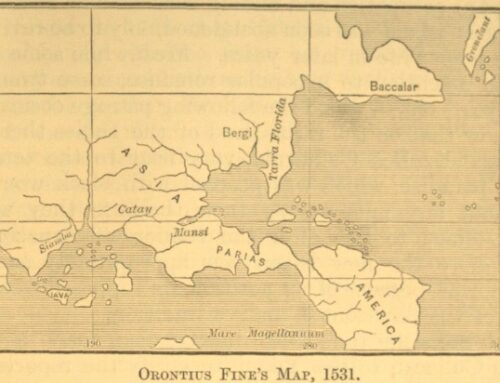
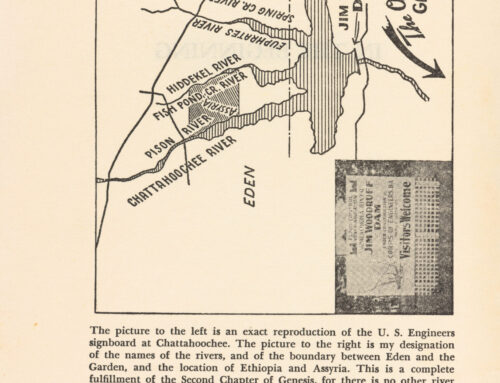
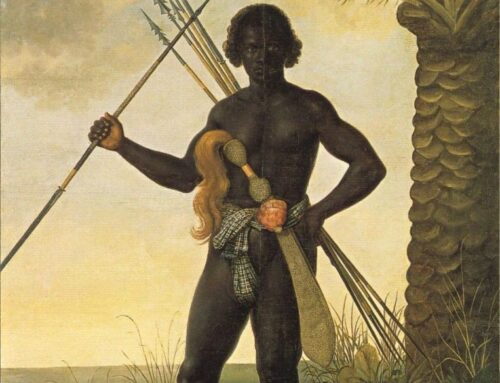
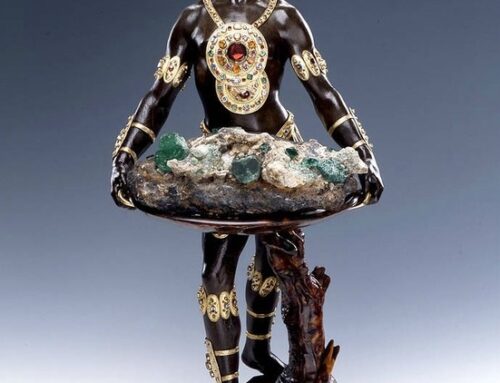
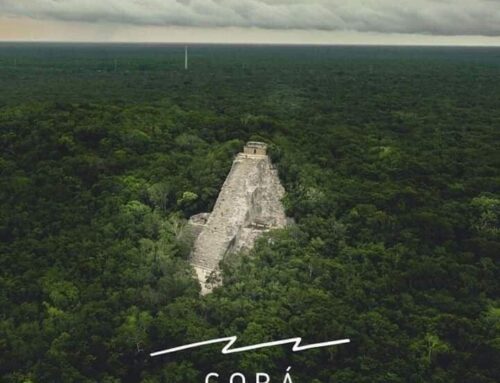
Leave a Reply